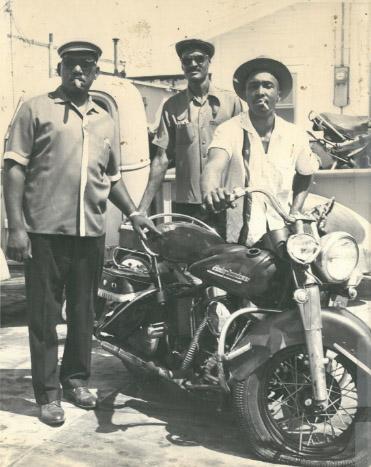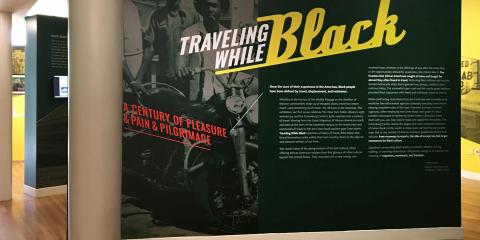Since the start of their experience in the Americas, Black people have been defined by travel, displacement, and resistance.
Whether in the horrors of the Middle Passage or the rebellion of Maroon communities made up of escaped slaves, travel has meant much—and something much more—for Africans in the Americas. This exhibition, our first as we celebrate The New York Public Library’s 125th anniversary and the Schomburg Center’s 95th, explores over a century of travel. Moving from the Great Migration of African Americans north and west at the start of the twentieth century to the restrictions and resistances of travel in the Jim Crow South and the Jane Crow North, Traveling While Black examines a history of travel, from those who found themselves exiles within their own country down to the pilgrims and pleasure seekers of our time.
War marks many of the peregrinations of the last century, often offering African American soldiers their first glimpse of other cultures beyond the United States. They returned with a new energy and renewed hope, whether in the offerings of jazz after the Great War, or the opportunities abroad for expatriates after World War II. The freedom that African Americans sought at home and fought for abroad they often found in travel. Returning Black officers and recruits started motorcycle clubs and organized tour groups, traditions that continue today. The somewhat open road and the mostly great outdoors provided Black sojourners with literal and emotional vistas to revel in.
While confronting restrictions from Jim Crow laws and surveillance by would-be law enforcement agencies stateside, everyday travel meant obeying unspoken rules of the road. Domestic journeys involved ingenuity, often employing the Green Book, that guide for Black travelers developed in Harlem by Victor Green. Carry your Green Book with you...you may need it! reads one tagline for the guides. The Schomburg Center retains the largest and most complete collection of Green Books in the world; in many cases we hold the only known copy. But as any number of African American guidebooks found here indicate, from runaways to resorts, the idea of escape has had larger resonances for Black culture. Questions surrounding Black bodies in motion—whether driving, walking, or traveling while Black—still persist, asking us to consider the meaning of migration, movement, and freedom.
—Kevin Young
Curator



